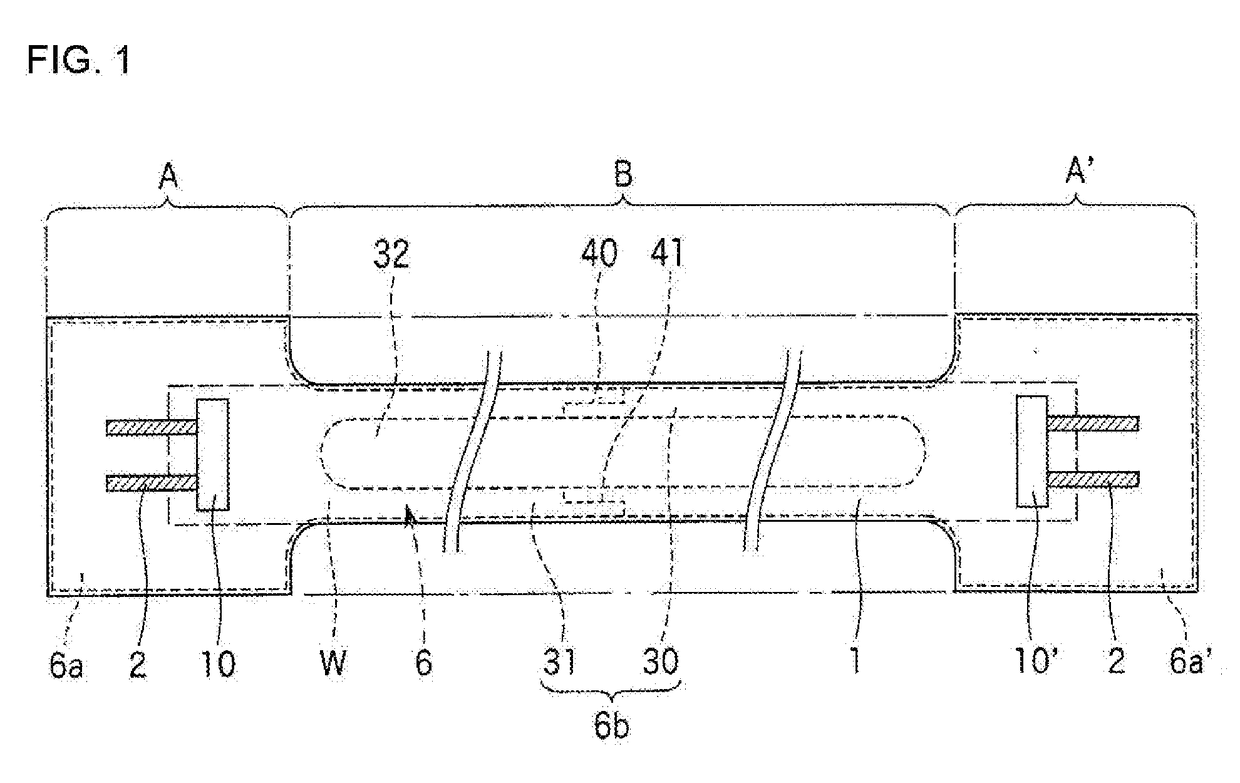Opto-electric hybrid board
a hybrid board and optoelectronic technology, applied in the direction of optical elements, circuit optical details, instruments, etc., can solve the problems of reducing the width of the corner portion z, z′, and the w of the optical waveguide w, so as to improve the flexibility of the interconnection portion, reduce the width, and strengthen the interconnection portion.
- Summary
- Abstract
- Description
- Claims
- Application Information
AI Technical Summary
Benefits of technology
Problems solved by technology
Method used
Image
Examples
example 1
[0067]The opto-electric hybrid board shown in FIGS. 1, 2A and 2B was produced by the aforementioned production method. The interconnection portion B had a length of 20 cm. A 20-μm thick stainless steel layer was provided as the metal reinforcement layer 6. The rounded proximal corner portions of the smaller width portion 6b of the metal reinforcement layer 6 each had a curvature radius of 1.5 mm. The two elongated portions 30, 31 (see FIG. 2B) each had a width T of 400 μm, and the discontinuities 40, 41 each had a width of 100 μm. Since the portions of the elongated portions 30, 31 separated widthwise from each other had a total width (Q+S) of 400 μm, the ratio T:(Q+S)=1:1. The insulation layer 1 had a thickness of 5 μm, and the under-cladding layer 7 had a thickness of 10 μm (as measured from the back surface of the insulation layer 1). The core 8 had a thickness of 50 μm and a width of 50 μm. The over-cladding layer 9 had a thickness of 70 μm (as measured from the surface of the u...
PUM
 Login to View More
Login to View More Abstract
Description
Claims
Application Information
 Login to View More
Login to View More - R&D
- Intellectual Property
- Life Sciences
- Materials
- Tech Scout
- Unparalleled Data Quality
- Higher Quality Content
- 60% Fewer Hallucinations
Browse by: Latest US Patents, China's latest patents, Technical Efficacy Thesaurus, Application Domain, Technology Topic, Popular Technical Reports.
© 2025 PatSnap. All rights reserved.Legal|Privacy policy|Modern Slavery Act Transparency Statement|Sitemap|About US| Contact US: help@patsnap.com



